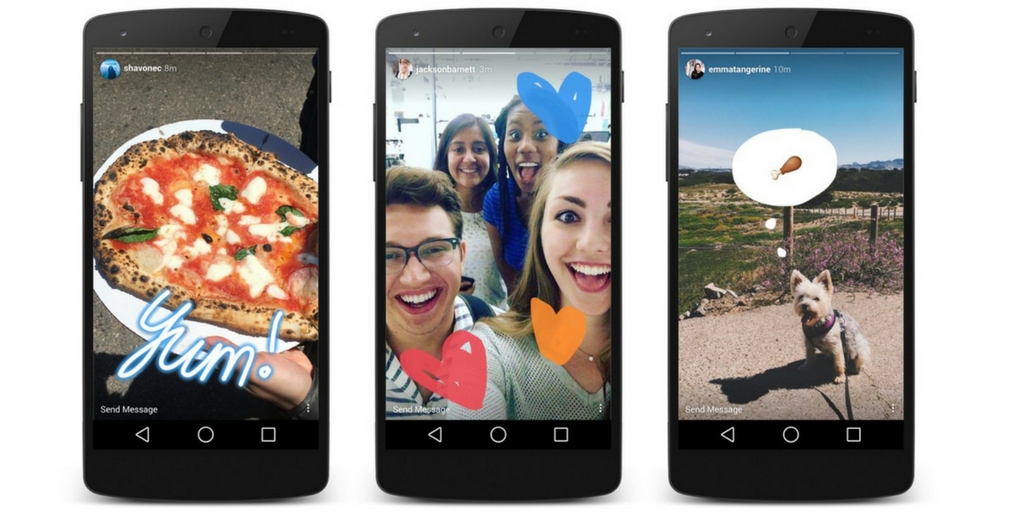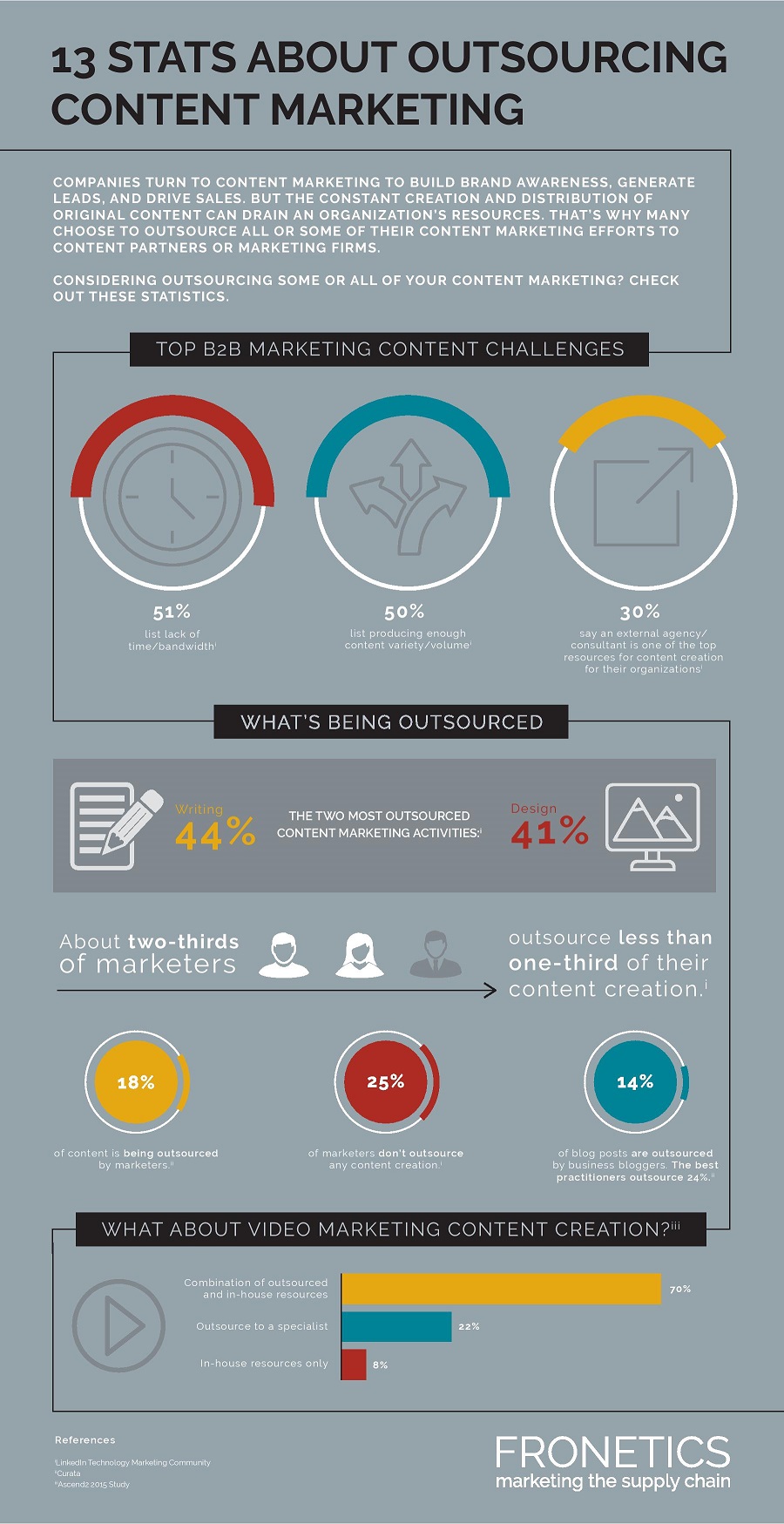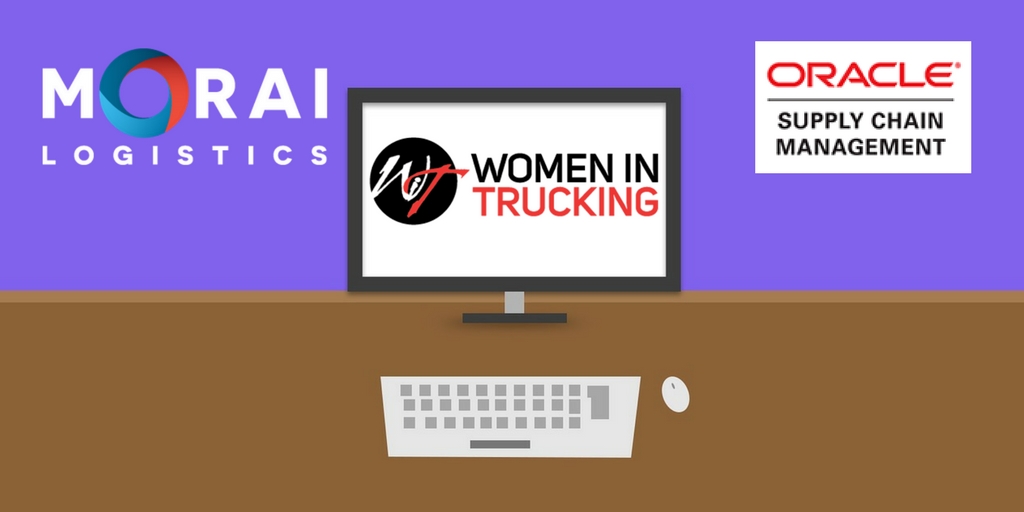
by Fronetics | Feb 6, 2017 | Blog, Content Marketing, Marketing, Social Media, Supply Chain
Instagram Stories offer an on-trend platform for delivering targeted content to B2B buyers and building brand awareness with potential customers.
If you haven’t considered using Instagram as part of your social media marketing program, it might be time to change your mind.
As of December 2016, Instagram had over 600 million monthly active users, about half of whom are between the ages of 18 and 29. Why should supply chain and other B2B marketers pay attention to the social networking preferences and behaviors of millennials? Because 73% of millennial workers are involved in decisions to purchase products or services for their companies. Welcome to the new generation of B2B buyers.
What’s more, Instagram’s recently launched feature, Instagram Stories, offers marketers a new platform for content delivery that is wildly popular with this generation. But unlike other networks with short-term video-sharing opportunities (ahem, Snapchat), Stories can have a polished, professional feel that well suits B2B brands.
What are Instagram Stories?
Instagram Stories are sequences of content that a user posts to his/her Instagram account over a 24-hour period. Besides photos, Stories can include videos, live and prerecorded, as well as Boomerangs, seconds-long motion clips that play forwards and backwards. The content plays as a continuous feed, creating a narrative about the user’s day — hence the term “Stories.”
Users may also customize their Stories with various design tools. Swipe to explore different filters, or add customizable stickers with time, weather, location, or even holiday greetings. You can also use a drawing tool to create your own masterpiece on your photos or videos.
Audiences can view the Stories of the users they follow within the 24-hour window after they are posted. They can find users with active Stories by scrolling the user icons at the top of the app. Or users can tell their followers that they’ve posted a story by tagging them, which notifies them through a direct message.
How you can supply chain and B2B marketers use Stories?
Instagram Stories aren’t just for friends showing friends what they’ve been up to. They’re a creative content-delivery platform that helps build rapport with followers, grow brand awareness, and educate potential buyers.
Here are 5 ways marketers might use Instagram Stories to engage their target audiences.
1. Deliver special offers and limited sales
Take advantage of this channel of communication to give special offers to followers tuning into your Stories. The time sensitivity of the 24-hour period will urge your buyers to engage with your Story and act quickly before the offer expires.
Direct followers to a special landing page or include a code right in the Story. As Social Media Examiner puts it, “The scarcity of Instagram Stories gives them power.”
JCrew’s promotion of the new Jane in Pink sunglasses offers an example of the clever use of Instagram Stories. The brand posted a combination of GIFs and photos teasing the pink sunglasses before announcing that there were a mere 50 pairs available for purchase through a link in its bio. This caused half of the merchandise to sell out in two hours.
2. Sign in for a takeover
Arrange to take over the Instagram account of a partner company or customer. It’s a fun way to draw attention from an existing, built-in audience. And it provides a mutually beneficial exchange of value for both parties.
As explained by media executive Gary Vaynerchuk, account takeovers offer a “backdoor approach to accessing new demographics.” The strategy is about “deepening relationships, gaining exposure, hacking distribution, and raising awareness.”
What’s more, account takeovers don’t require partners to hand over sensitive login information. Simply send your content to your partner to upload. It’s win-win situation that allows both parties to reach a new audience and share new content with ease.
3. Go behind the scenes
This is a great way to humanize your company and let you customers see and experience your brand personality. Capture candid photos of meetings. Take your followers on an adventure or an offsite task. Have a new product? Share a picture of the early designs or the production process. It’s a way to get followers excited and intrigued as to what happens behind the doors of your company.
Happy Socks, a Swedish sock and underwear retailer and manufacturer, does this well. It features videos of what’s going on in the office, birthday celebrations, and other candid moments.
4. Q&As
Get really personal with your customers by answering their questions via 10-second videos. One of Instagram’s community managers, Jeffrey Gerson, did this and found it to be a great success. This allows your viewers to feel as though they are really being heard since they are watching you talk about their questions as opposed to just reading typed answers online. It’s also a great opportunity to showcase the personalities of your employees and social media team while directly interacting with your audience.
4. At a loss? Ask your followers!
Give the people what they want — They may have some great ideas that you’d never considered. Survey your followers by posting a graphic of some options while leaving it open-ended as well. Have them respond in direct messages or comments with what they want to see from your social media. For example, Red Bull had their audience send the thumbs-up emoji in direct messages through Instagram Chat for the Story topic they most wanted to see published.
These five options provide your team with a starting point to begin exploring Instagram Stories. It’s an exciting tool to add some creativity and have some fun with your social media strategy.
Related posts:

![Outsourcing Content Marketing: 13 Stats You Should See [Infographic]](https://www.fronetics.com/wp-content/uploads/2024/10/outsourcing-content-marketing.jpg)
by Fronetics | Feb 1, 2017 | Blog, Content Marketing, Marketing
Thinking of outsourcing content marketing? This infographic illustrates how other B2B marketers are handling content creation.
Plan. Create. Distribute. Repeat.
Does the constant creation of content feel like a drain on your resources? Do you feel like the content you’re publishing isn’t on par with the standards of your business? Do you dread the days that you need to write a blog post or prepare a customer resource?
If any of these questions hit home, chances are you’ve thought about outsourcing.
Outsourcing content marketing can be a beautiful thing: You put the content creation, design, and even distribution in the hands of an expert, leaving you free to focus on your job. But, isn’t that cheating? (It’s not.) Are other companies doing it, too? (You bet.) Ultimately, is it a good business decision? (The top business blogs outsource about 24% of their content creation.)
We’ve created the following infographic to illustrate how other B2B marketers are handling outsourcing content marketing. Here are 13 statistics you need to know before you consider outsourcing.

(Made with Canva)
Related posts:

by Fronetics | Jan 31, 2017 | Blog, Content Marketing, Marketing, Social Media, Strategy
Sales teams can use social media to cultivate relationships with potential buyers, a process called social selling.
With the dawn of the social media age and the exponential increase in choices and information available to buyers, we’ve seen a massive shift in the way B2B sales occur. According to the Harvard Business Review, a striking 84% of B2B sales start not with a salesperson, but with a referral.
As outbound sales become decreasingly effective, peer recommendations are influencing more than 90% of all B2B buying decisions. So how do we make the shift from outbound sales to this new reality? One of the more popular answers is social media.
It’s likely that your organization has some sort of social media marketing strategy in place. But making full use of these platforms requires a more nuanced, well-rounded strategy than blanket social media marketing. It’s time to introduce the idea of “social selling.”
Social media as a sales tool
In a basic sense, social selling is the strategy of adding social media to the sales professional’s toolbox. This means using social platforms to research, prospect, and network by sharing curated educational content and answering questions. The key is building relationships until prospects are ready to buy.
So what’s the difference between social media marketing and social selling, and why is it important? While both are necessary to an integrated marketing and sales strategy, the former is about engaging many — with the goal of increasing brand awareness or promoting a specific product — by producing content that users will ideally share with their networks.
Meanwhile, social selling means producing focused content, and providing personal communication between the salesperson and the buyer. Again, the key is building and cultivating a relationship using social media platforms.
How to start social selling
The benefits of social selling are numerous and significant. For example, according to a LinkedIn survey, B2B buyers are five times more likely to engage with a sales rep who provides new insights about their business or industry. Social media is a powerful engagement tool, giving sales people a platform for sharing these insights.
Here are some steps your sales team can take to implement social selling.
1) Put it in your calendar.
Allot a small portion of your day for social media. It doesn’t take a big time investment to reap the benefits of regular interaction with your prospects.
2) Integrate sales and marketing.
Encourage collaboration between sales and social marketing departments, to make the most of both efforts. HBR suggests that “marketing can train salespeople in social media systems, processes, and best practices.” In addition, sales and marketing should be regularly sharing information to make sure their goals are aligned, and efforts are dovetailing. According to a study by Data Room and Marketo, “sales and marketing alignment can improve sales efforts at closing deals by 67% and help marketing generate 209% more value from their efforts.”
3) Prioritize relationship-building.
Focus your business’ ongoing efforts to building and cultivating quality relationships with prospects. This means building in time every day for personal communication. Make your prospects’ needs your priority.
The bottom line here is building and maintaining relationships. Social media — and social selling — are powerful tools for doing just that.
Related posts:

by Fronetics | Jan 30, 2017 | Blog, Content Marketing, Logistics, Marketing, Supply Chain, Transportation & Trucking
Our readers voted Morai Logistics, Women in Trucking, and the Oracle Supply Chain Management Blog as the top 3 logistics and supply chain blogs of 2017.
Every year we ask our readers to vote for the best industry blogs. The results are always interesting — there’s really a lot of great supply chain and logistics content out there, plus it’s great to see where our readers are finding value.
This year was no different. The best logistics and supply chain blogs, as named by our readers, are all new to our best blogs list. They probably couldn’t be more different, either. But all three offer consistent, high-quality content, which is key to running a successful blog.
Here are the top 3 logistics and supply chain blogs of 2017.
1) Morai Logistics
Morai Logistics Inc. is a Toronto-based third-party logistics provider representing Mode Transportation. Morai’s blog covers the most pressing issues facing the logistics industry, as well as trends to watch out for, professional tips, and career advice. The almost-weekly posts have a lot to offer, in terms of information and thought leadership, and they often include valuable (and, might we add, beautiful) visual elements like infographics.
P.S. Check out our interview with Morai Logistics’ President Kelli Saunders.
2) Women in Trucking
The Women In Trucking Association is a non-profit organization focused on encouraging the employment of women in the trucking industry, promoting their accomplishments, and minimizing obstacles. Just one vote shy of the top spot, the Women in Trucking blog — or, should we say blogs — bring to light many issues of concern to both women and men working in the trucking industry. President/CEO Ellen Voie’s blog offers thought-provoking, insight on topics from the driver shortage to recruiting women drivers. The driver’s blog — with content mostly from longtime driver and writer Sandy Long — tackles pressing day-to-day issues facing drivers, such as parking in dangerous locations, family problems stemming from job-related realities, and assimilating to trucking culture.
3) Oracle Supply Chain Management
The Oracle Supply Chain Management blog looks at how Oracle helps organizations transform their supply chains into more holistic and integrated value chains that cover the three key operational pillars: Demand, Supply, and Product. Weekly content from a number of contributors cover topics including supply chain management, events, product lifecycle management, logistics, technology, and more.
Honorable mention
These blogs received quite a few votes as well.
What blogs do you read on a regular basis? Which have the most valuable content?
Related posts:

by Fronetics | Jan 25, 2017 | Blog, Content Marketing, Marketing, Strategy
To stay relevant following Google’s mobile-first approach, marketers need to examine their company’s mobile user experience.
Marketers, take notice: Google’s announcement that it is experimenting with a “mobile-first” search index is a reminder to examine your website content and configuration. The message from the search engine giant is clear: Now is the time to enhance your company’s mobile online experience.
A mobile-first society
The future is pointing toward increasing mobile device use. In 2015, mobile traffic accounted for more than half of internet traffic, and that percentage is growing. Google reported that more searches take place on mobile devices than on desktops. In response to this trend, Google’s new algorithms will rank mobile-friendly web pagers higher in search results than desktop pages.
These days, it’s pretty much a given that your clients and customers own a mobile device and use it quite often in their professional lives. Your site needs to meet the expectations of the viewer, which is to access content easily via mobile. If you fall short of this, you’ll lose credibility and, ultimately, income.
What do B2B marketers need to do?
Google currently uses two indexes to rank search results, 1. desktop pages and 2. mobile pages. If Google makes good on its promise to have a mobile-only index, websites optimized for mobile use will get higher billing at the top of search results, leading to more clicks, more brand recognition, and, ultimately, more sales.
Marketers need to prepare now to ensure a prominent place in Google’s search results. Here are three tips on how to do that.
- Develop a strong working relationship with your webmaster — they are in the experts on the technical side and can keep you abreast of updates and trends in website optimization.
- Conduct an audit of your websites to check for SEO. Use a website such as http://responsivedesignchecker.com/ to give you real-time feedback.
- Become familiar with these three methods of web development:
- Responsive web design – allows website pages to adapt to whatever size screen the viewer is using.
- Dynamic serving – the server responds with different HTML (and CSS) on the same URL depending on the user agent requesting the page
- Mobile-only URL – each desktop URL has an equivalent different URL serving mobile-optimized content
Check here to see how your site is configured.
Google’s tips
Google offers tips to webmasters to make their sites mobile-first. If your site is already optimized for mobile with RWD or is a dynamic-serving site, you shouldn’t need to make any adjustments. But if not, work with your webmaster on the following:
- Serve structured markup for desktop and mobile versions
- Make sure your site is accessible to Googlebot
- Verify both desktop and mobile sites in Google’s Search Console
Should your business website be optimized for mobile searching? The short answer is undoubtedly yes.
Related posts:



![Outsourcing Content Marketing: 13 Stats You Should See [Infographic]](https://www.fronetics.com/wp-content/uploads/2024/10/outsourcing-content-marketing.jpg)



